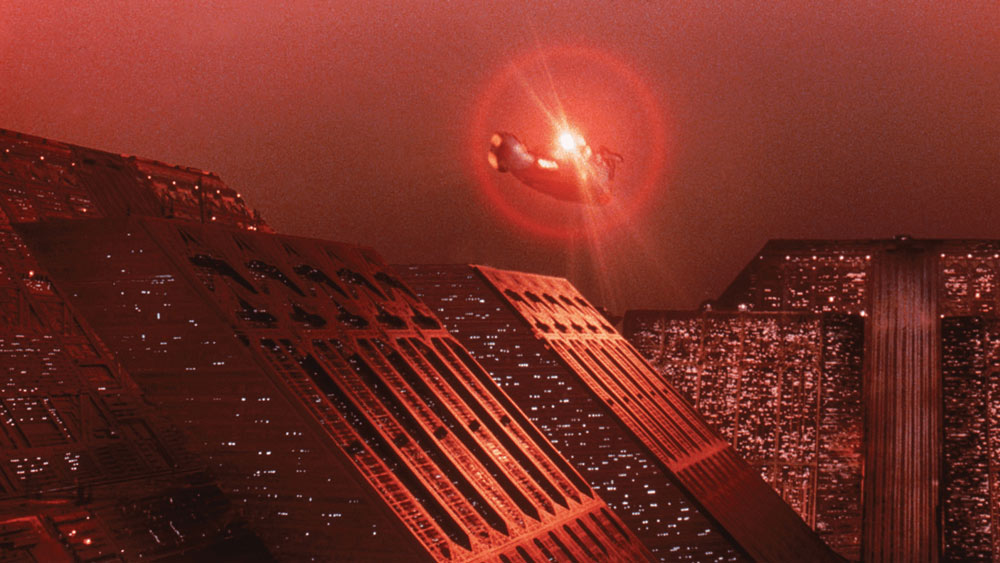
TM & (c)2017 The Blade Runner Partnership. All Rights Reserved.
"Blade Runner" Approaching the legendary opening created by analog filming without CG!
2017.11.20
What is the secret of analog photography that remains unchanged even after 30 years? ?
Despite being over 30 years old, there aren't that many science fiction works that have maintained the quality of their art. And there is a man who was involved in the special effects for some of the most famous works, ``Blade Runner,' ' ``2001: A Space Odyssey ,'' and `` Close Encounters of the Third Kind of the Third Kind.'' That person is Douglas Trumbull , also known as the god of special effects.
The opening scene of ``Blade Runner,'' which I introduced earlier, was also the result of analog photography by Trumbull's EEG (Entertainment Effects Group). So how did they create such an overwhelming image? I would like to take a look at that end. The key points are "forced perspective," "multiple exposure," and "aerial perspective."
The first point, ``forced perspective,'' is when creating a miniature building, you make things in the foreground larger and smaller and wider toward the back, and then take advantage of the characteristics of the lens to photograph them, making them look just like the real thing. This is a method of expressing depth and breadth. This method is also used in ``Netherworld Landscape'', where the building in the foreground is made in miniature detail, but the one in the back is a silhouette of a building made of brass plate. It seems like they just made a bunch of them and lined them up, but no matter how many times I look at them, they don't look like ordinary boards. . It's just movie magic.

"Blade Runner" TM & (c)2017 The Blade Runner Partnership. All Rights Reserved.
The second point is `` multiple exposure, '' which refers to shooting (exposure) the same frame of a film multiple times. For example, "double exposure" means that two images overlap. It may be easier to imagine that many ghost photography tricks use double exposure.
By performing this multiple exposure, so-called compositing work is performed, but in ``Netherworld Scenery,'' the camera moves forward as a whole, so it has to be photographed with movement. In multiple exposures, if the timing or movement is slightly off, the "image" will also be off, so it is necessary to make exactly the same movements frame by frame/millimetre by millimeter. This is where the `` motion control camera' ' comes into play.
This camera can reproduce exactly the same movements under computer program control, and was first used in `` Close Encounters of the Third Kind '' and ``Star Wars .'' Moreover, floppy disks were not yet widespread at that time. It is said that the camera was operated by storing programs on magnetic tape. Using this camera, he repeated the same movements over and over again, shooting a piece of film, then rewinding it and compositing it one by one.
In ``Netherworld Scenery'', the same movements were taken and composited 17 times, including the base miniature, flames blowing out of chimneys, flying spinners, and lightning strikes. Although the movement was controlled by the camera, it was also controlled by the subject, which made it extremely difficult to photograph. . It is said that sometimes the film could not withstand the excessive exposure (exposure) and would be damaged. It is a daunting task. .
Finally, the third point is ``aerial perspective,'' which, as the name suggests, is a perspective method that uses the ``feeling of air.'' When you look at distant scenery outside, you may see a haze or a different color tone. This technique is used to express a sense of perspective, and the dystopian worldview of ``Blade Runner'' was said to be of great help.
As mentioned in the article above , Ridley Scott's quote, ``My weapons were the night, the rain, and the smoke,'' was effective here as well. The fact that the scene is a night scene hides the roughness of the composition, and the smoke (haze) that creates the atmosphere of near-future air pollution makes this ``aerial perspective'' extremely effective.

